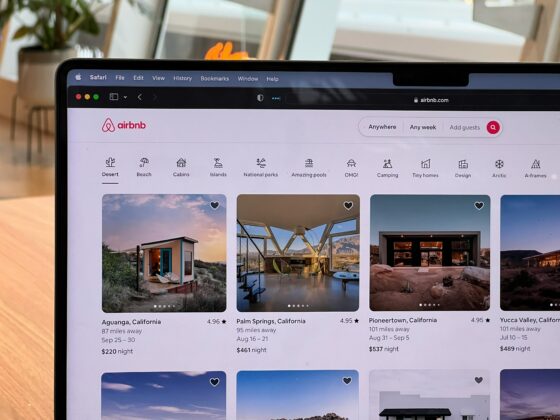
As hospitality leaders continue grappling with labor shortages and high turnover, many are realizing that traditional recruiting methods just can’t keep up. While the sector slowly recovers from pandemic-era disruptions, employee expectations have evolved—demanding better conditions, more flexibility, and meaningful career growth.
Heidi Barnett, President of Talent Acquisition Solutions at isolved Talent Acquisition, believes the time has come for hotels and restaurants to rethink their approach to talent acquisition entirely. In this Q&A, Barnett outlines how AI and automation can transform recruiting from a time-intensive chore into a strategic differentiator—one that helps hospitality businesses attract, retain, and empower frontline talent.
The hospitality industry continues to struggle with high turnover and staffing shortages. From your perspective, what are the biggest underlying causes of these persistent challenges?
Staffing challenges have been a long-standing issue in the hospitality industry for years, with the U.S. Bureau of Labor Statistics noting the Leisure and Hospitality industry has some of the highest turnover rates of any industry in the country. This isn’t surprising, as many hospitality roles are perceived as temporary and transient jobs instead of long-term careers.
The hospitality sector has a very demanding work environment, with irregular and long working hours, limited benefits, low wages and complex customer service that is draining for employees. This lack of structure and high-stress environment, coupled with growing employee expectations for stability, flexibility and career advancement, has created hiring barriers that plague the industry. Additionally, hospitality roles are predominantly onsite, which further complicates recruitment efforts as candidates increasingly prioritize positions with remote or hybrid options. In fact, data shows 61% of workers say they are more likely to apply for jobs that offer remote or hybrid options. The result is a persistent workforce gap that challenges business leaders’ ability to operate and grow.
How can hospitality businesses leverage technology to address workforce instability? Are there specific tech-driven approaches that have proven more effective in attracting and retaining talent?
Technology is playing a crucial role in helping hospitality executives tackle workforce challenges by streamlining hiring processes and administrative burdens. Technology has historically optimized payroll and workforce scheduling, but now the impact can begin before an applicant even applies. AI-powered tools are helping businesses craft optimized job descriptions for job listings that attract more qualified applicants. Automation is also significantly improving the hiring process through solutions like applicant tracking systems (ATS) and advanced candidate matching. For hospitality leaders, this allows them to sift through hundreds of job applicants in order to advance the most promising candidates. By automating these back-end tasks, hospitality leaders can focus more energy on improving the employee experience to create an environment that motivates employees to stay, grow and help businesses grow.
Many hospitality CTOs and CIOs work closely with HR but aren’t necessarily involved in day-to-day recruiting operations. What role should IT leaders play in supporting talent acquisition strategies?
Digital transformation has encroached upon every function of the workplace, including the role of HR professionals. While HR leaders continue to leverage automation and new AI technologies, IT leaders are uniquely positioned to empower them to implement and scale that technology in ways they may not have previously considered. They can identify mundane processes that can be automated for their company or sector, ranging from filtering candidates to analyzing data, which makes it simpler to hire. Instead of working in silos, IT leaders should work alongside HR teams to identify, evaluate and implement new tech stacks. IT teams can make sure that new technology and tech stacks integrate seamlessly within the existing infrastructure, while maintaining a secure and frictionless employee experience.
AI-driven hiring solutions are becoming more common, but there’s concern about bias and the candidate experience. How should hospitality leaders approach AI in recruitment while ensuring fairness and a human touch?
Before adopting any AI-driven solutions, whether it’s for recruiting or another part of the employee experience, it’s important for business leaders to do evaluations of any AI models. If possible, organizations should do external evaluations of their models or ask questions about the evaluation process of AI tools from the vendor. Through external evaluations or accreditation, teams can ensure models don’t have any bias that could alter or harm their hiring processes in any way. Hospitality leaders must ensure an AI model’s hiring recommendations are explainable to foster trust and accountability in the recruitment process. Transparent AI systems allow hiring managers to understand the rationale behind candidate evaluations and screenings, while also mitigating potential biases that arise through training data. This clarity helps comply with legal and ethical standards while empowering hiring teams to make informed decisions without the need for technical knowledge.
Additionally, while many recruitment teams leverage AI to manage administrative burdens, they should constantly monitor and oversee the work it’s doing. These tools should enhance their work, not overtake it entirely. Conducting regular auditing tests for AI models can help HR teams and business leaders ensure models are free from bias to maintain a transparent and fair perspective.
One of the challenges hospitality businesses face is balancing high-volume hiring needs with maintaining quality hires. What are some best practices for using technology to optimize both speed and effectiveness in recruitment?
The hospitality industry moves at a very quick pace to meet customer needs, but the key to a great customer experience is a great employee experience. In fact, data shows 90% of employees report that their experience at work directly impacts the service they provide to customers. This means it’s important to not only attract and hire the best talent, but also maintain and retain them. When hospitality leaders can identify a high-performing individual through the hiring process, it’s important to move them quickly in the process. AI-powered chatbots can help keep talent engaged while they move along through interviews and resume screenings. Automated tools can also help fast-track hiring by creating near-final offer letters and personalized onboarding tasks based on candidate skills and experience. Technology shouldn’t solely aim to accelerate the process, it should optimize hiring by freeing up hospitality leaders to dedicate more time to personalized interactions that enhance candidate engagement and reduce instances of ghosting. This personalized approach fosters excitement among candidates while streamlining the hiring process by building stronger connections.
With data privacy and security being top priorities for CIOs and CISOs, what are some key considerations when implementing new talent acquisition technologies in a hospitality setting?
As with any industry, protecting Personally Identifiable Information (PII) should always be top of mind, especially when using tools like AI. When used ethically, AI can have a positive impact on both attracting talent and relieving HR teams of the constant churn of hiring. For organizations in the hospitality industry that face ongoing labor shortages, this efficiency is key. For example, isolved Talent Acquisition uses AI to automate and optimize job ad writing. This is an AI use case that frees up time for HR teams typically spent writing and rewriting descriptions, so they can focus more on creating a higher-quality candidate experience without putting data at risk.
When implementing new talent acquisition technologies, CIOs and CTOs should meet with HR teams to align on appropriate use cases that protect both company data and applicant information. IT teams can work closely with HR during the implementation process to help them better understand platform functionality and any safeguards they must put in place to protect sensitive information, like social security numbers or bank information.
How can recruitment technology better integrate with existing workforce management, payroll, and HR systems to create a seamless employee lifecycle experience? What are the pitfalls to avoid?
When organizations have separate technologies or processes for recruiting and workforce management, it can easily throw a wrench into the flow of the employee lifecycle. For example, HR teams are collecting candidate information from the moment an individual submits an application. If that candidate is then hired, HR leaders must manually transfer all that information from one system to another. This both wastes time and can lead to avoidable human errors.
Integrating recruitment technology with existing workforce management tools is the key to creating a seamless employee lifecycle, and it significantly improves HR teams’ abilities to create meaningful employee experiences. Having a one-stop-shop solution means that employee data lives in one place – this makes leveraging that data much easier and more effective. For example, when a candidate accepts a job offer, information like their work anniversary will be automatically moved from the ATS to payroll, scheduling, or recognition platforms. HR teams can immediately begin the onboarding process, sending personalized welcome messages to employees, which can help them feel recognized and appreciated before they even start. When HR teams remove data silos, they can see long-term employee trends and inject meaningful experiences throughout their lifecycle within the organization.
Although integrated HR systems are transformative for streamlining routine tasks and enhancing the employee experience, it’s not a “set it and forget it” situation – their success depends on thorough training. HR teams need a strong understanding of how each component functions and how the systems interact as a whole. To maximize value, IT teams should collaborate with HR to lead training sessions so they can fully leverage the technology. This ensures the organization not only sees a strong return on investment but also uses the systems as strategically and effectively as possible.
What are some lessons hospitality businesses can learn from other industries that have successfully navigated similar workforce challenges using technology?
Many other industries with front-line workers, like healthcare and manufacturing, face the same recruiting challenges that threaten organizational stability, employee success, and ultimately business profitability. From high turnover to tight labor markets and the need for efficiency during the hiring process, they’ve had to undergo a digital transformation to address these challenges and keep the doors open. If they lack the employee base to keep guests, customers, or patients satisfied, they’ll see a significant impact on their bottom lines. HR tech investments are not just a nice-to-have – they’re a strategic business imperative that helps organizations stay competitive and build more resilient workforces.
For example, many healthcare organizations use AI-driven ATS and candidate matching technology to help match individuals with the appropriate role and minimize time-to-hire. This not only improves hiring efficiency, but also helps with retention by aligning qualified candidates with the right job fit from the start. To address the ongoing skills gap, manufacturing organizations are prioritizing early upskilling by using AI-driven technology to identify skill deficiencies and provide tailored training modules.
As the hospitality industry begins to leverage these tech-driven use cases, they’ll see improvements in the employee experience and enjoy greater retention rates – all of which will trickle into customer satisfaction and help these organizations drive revenue growth.
Beyond just recruitment, how can IT leaders collaborate with HR to improve employee engagement and retention through digital tools and automation?
There are many opportunities for IT teams to work with HR to create better employee outcomes – starting with ongoing training and knowledge sharing. IT’s deep understanding of digital tools and automation allows it to identify practical use cases that can streamline repetitive tasks. By sharing this expertise – such as how to automate workflows using platforms like ChatGPT – HR teams can reclaim time to focus on impactful initiatives like employee engagement, mentoring programs, and benefits communication.
As employee data becomes more accessible, parsing through insights can be overwhelming for HR. IT teams can play a critical role in helping HR collect, understand, and activate based on the data’s insights. For example, by breaking down engagement survey responses by demographic or job level, they can support HR in designing more personalized and effective engagement strategies.
Additionally, many hospitality workers are on the frontlines and lack access to the same technology as those who work at desks. IT and HR can collaborate on mobile-first technology strategies that ensure all employees, regardless of role, have easy access to schedules, training, company updates, and benefits information. This not only boosts inclusion but also helps frontline workers feel more connected to the organization as a whole.
Looking ahead, how do you see the future of talent acquisition evolving in hospitality, and what should industry leaders be preparing for now?
Recruiting challenges have only intensified in recent years, with 69% of HR leaders expecting hiring to be just as difficult – if not more difficult – than 2024. With ongoing talent shortages, economic uncertainty, and the inherently unpredictable nature of the hospitality industry, HR teams must take a proactive, strategic approach to talent acquisition. This includes building a strong employer brand, leveraging marketing tactics to amplify job roles to aligned audiences, and delivering seamless, candidate-focused experiences that make people want to join (and stay) with the organization.
Organizations, especially in the hospitality industry, have to move away from the “post and pray” strategies of the past. These types of job listings often get hundreds of applications, resulting in wasted time as HR teams sort through countless resumes for candidates that aren’t the right fit. Instead, they need to be able to post a job listing and quickly see those candidates that are strong, qualified matches – this is why AI-driven recruiting technologies like Talent Acquisition can be a game-changer for HR teams. It helps draft accurate and detailed job descriptions, post them to optimized sites like Indeed, and sort through applications to surface the most qualified candidates. This will help cut down time-to-fill, which is critical for the hospitality industry.
Retention will be just as crucial as recruitment, so HR teams must also work on improving the employee experience. By doing so, hospitality leaders can strengthen their workforce from within, reduce turnover and lessen the pressure on hiring pipelines. HR teams should leverage the power of technology and data by using automation to eliminate time-consuming tasks and refocusing their efforts on high-impact initiatives that create a positive, lasting employee experience.








